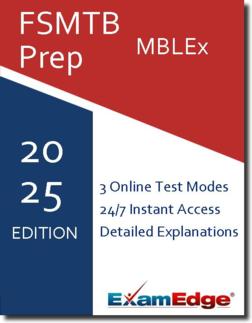FSMTB MBLEx (MBLEx) Practice Tests & Test Prep by Exam Edge - Topics
Based on 40 Reviews
- Real Exam Simulation: Timed questions and matching content build comfort for your FSMTB MBLEx test day.
- Instant, 24/7 Access: Web-based FSMTB Massage and Bodywork Licensing Examination practice exams with no software needed.
- Clear Explanations: Step-by-step answers and explanations for your FSMTB exam to strengthen understanding.
- Boosted Confidence: Reduces anxiety and improves test-taking skills to ace your FSMTB Massage and Bodywork Licensing Examination (MBLEx).

Understanding the exact breakdown of the FSMTB Massage and Bodywork Licensing Examination test will help you know what to expect and how to most effectively prepare. The FSMTB Massage and Bodywork Licensing Examination has 100 multiple-choice questions The exam will be broken down into the sections below:
| FSMTB Massage and Bodywork Licensing Examination Exam Blueprint | ||
|---|---|---|
| Domain Name | % | Number of Questions |
| Anatomy & Physiology | 11%-12% | 12 |
| Kinesiology | 11%-12% | 12 |
| Pathology, Contraindications, Areas of Caution, Special Population | 13%-14% | 14 |
| Benefits and Physiological Effects of Techniques that Manipulate Soft Tissue | 14%-15% | 15 |
| Client Assessment Reassessment & Treatment Planning | 17% | 18 |
| Ethics, Boundaries, Laws and Regulations | 15%-16% | 16 |
| Guidelines for Professional Practice | 13%-15% | 14 |


